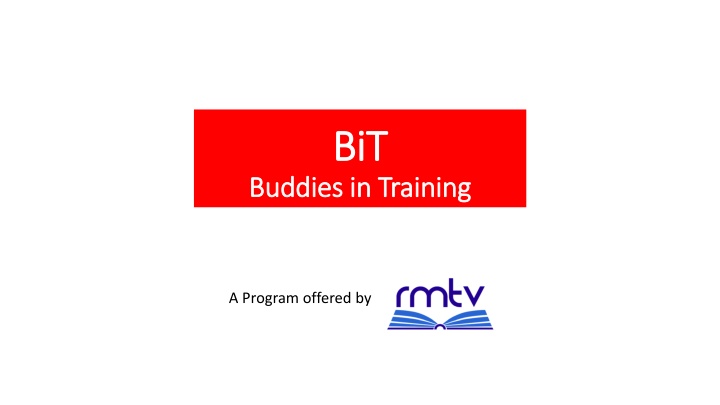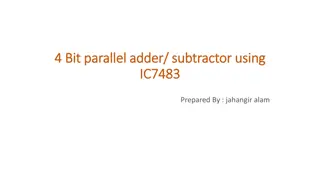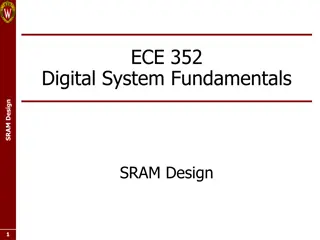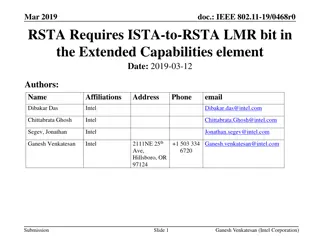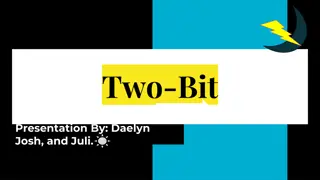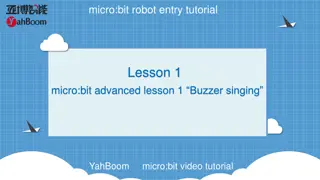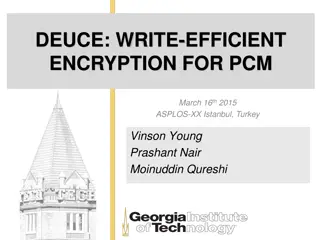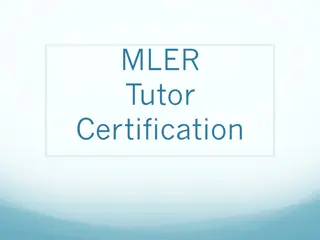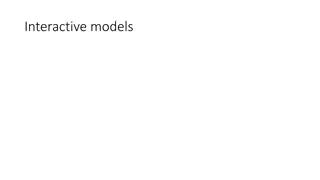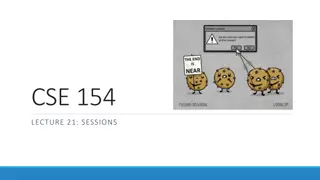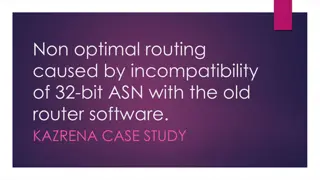BiT Buddies: Program Overview & Interactive Sessions
Through the BiT Buddies in Training program, participants delve into peer mentoring and listening skills, setting expectations and boundaries. Engage in exercises to distinguish between hearing and active listening, fostering deeper communication and understanding.
Download Presentation

Please find below an Image/Link to download the presentation.
The content on the website is provided AS IS for your information and personal use only. It may not be sold, licensed, or shared on other websites without obtaining consent from the author.If you encounter any issues during the download, it is possible that the publisher has removed the file from their server.
You are allowed to download the files provided on this website for personal or commercial use, subject to the condition that they are used lawfully. All files are the property of their respective owners.
The content on the website is provided AS IS for your information and personal use only. It may not be sold, licensed, or shared on other websites without obtaining consent from the author.
E N D
Presentation Transcript
BiT BiT Buddies in Training Buddies in Training A Program offered by
Agenda for today Introduction and background BiT compared to a mentoring program Expectations Boundaries Exercises - Listening versus hearing - Simple debriefing Summary and questions
Hearing or listening From Bekka Prideaux
Hearing or listening Use open-ended questions: What . How . Where . With whom . When . Ask the next question from the last reply
Example - Tell me about the holiday. - How are you preparing for your holiday? - Struggles are challenging what is your biggest challenge? - I never feel quite ready either how have you gotten ready in the past? Work has been really busy and I can t seem to finish things off. Mostly I am struggling to get ready for our holiday
Example - What do you find particularly difficult? - How do you spend your time off work? - Which study techniques were useful in the past? - Where do you feel the majority of your time is spent? - When/where/how do you feel you are most effective? I find it difficult to find time to study while working. Tell me how I can find enough time for both
Exercise Breakout groups of two (2) Person 1 is the listener asking questions using the tools Person 2 is telling person 1 about a problem/issue/conundrum/challenge (OK to make it up!) Swap at 7 min person 1 is now 2 and 2 is 1 14 min total NB You are NOT expected to have finished the conversation and/or have found a solution at 5 min!
Exercise Open microphones OR write in the Chat: What went well/was easy? What was challenging/needs more practice? Any other comments?
Debriefing 1. Summarise the case - Re-direct if analysing - Stick to facts - Clarify if the timeline/events are unclear 2. Things that went well - Tell me what you think went well - What went well in that situation - What was done/used/adressed well in that case Re-direct if focus changes to what was NOT done well.
Debriefing 3. Opportunities to improve Can you think of anything which could be improved if it happened again? Is there anything which could have improved the situation for you/the patient? What do you think the team could improve on for future cases? 4. Points of Action What actions are you going to take now Who do you think would be best to approach to address X? How do you want to follow that up?
Exercise Breakout groups of two (2) Think of a clinical case you want to discuss with a colleague Person 1 is the Debriefer and will debrief Person 2 Person 2 will share a case and be lead by Person 1 through STOP Change at 5 min 10 min total
Exercise Open microphones OR write in the Chat: What went well/was easy? What was challenging/needs more practice? Any other comments?
Important Contacts EAP Doctors 4 Doctors https://www.drs4drs.com.au RMTV: Lee MacDonald, lee.macdonald@austin.org.au
References Dyrbye LN, West CP, Satele D, Boone S, Tan L, Sloan J, Shanafelt TD. Burnout among U.S. medical students, residents, and early career physicians relative to the general U.S. population. Acad Med. 2014 Mar;89(3):443-51. doi: 10.1097/ACM.0000000000000134. PMID: 24448053. https://www.publicsector.sa.gov.au/__data/assets/pdf_file/0005/253796/Peer-Support-Programs-Guidelines.pdf Horne, I.M.T., Veggeland, F., B the, F. et al. Understanding peer support: a qualitative interview study of doctors one year after seeking support. BMC Health Serv Res 23, 324 (2023). https://doi.org/10.1186/s12913-023-09312-y R KI, Gude T, Tyssen R, Aasland OG. Counselling for burnout in Norwegian doctors: one year cohort study. BMJ. 2008;337:a2004. Agarwal B, Brooks SK, Greenberg N. The Role of Peer Support in Managing Occupational Stress: A Qualitative Study of the Sustaining Resilience at Work Intervention. Workplace Health Saf. 2020 Feb;68(2):57-64. doi: 10.1177/2165079919873934. Epub 2019 Sep 20. PMID: 31538851. Linnan L, Fisher EB, Hood S. The power and potential of peer support in workplace interventions. Am J Health Promot. 2013 Sep-Oct;28(1):TAHP2-10. PMID: 24137807. Mead S, Hilton D, Ctirtis L. Peer support: a theoretical perspective. Psychiatr Rehabitf 2001 ;2.'i: 134-141 https://www.aihr.com/blog/mentorship-programs/ https://www.simonandschuster.com/authors/Stephen-R-Covey/4 https://www.ncbi.nlm.nih.gov/pmc/articles/PMC7808839/
